Canon 70-300mm f/4-5.6L IS Review – The Ultimate Zoo Lens?
Dustin Abbott
April 23rd, 2013
The Ultimate Zoo Lens?
Updated April 24, 2013 – added “Pixel Peeper” gallery for those interested in the performance with a teleconverter. I’ve added approximately 100% crops and the original picture, most unedited in any way.
Just about any photographer would love the chance to go on safari or to a wildlife preserve in an exotic destination, but the twin limitations of time and money often prevent that dream from becoming a reality. For many of us a trip to the zoo is the next best thing. Exotic animals in a park-like atmosphere can produce some stunning pictures. There are some challenges, however. Unlike nature, there is often glass, fence, or wire mesh between you and your subject, which creates shooting challenges. The second, of course, is the number of people around. In many cases this precludes using a tripod, meaning that having image stabilization in either your lens or camera body is important. One final challenge is the sheer size of many larger zoos means that you will have to walk significant distances; it is helpful to have gear with reasonable weight. The combination of framing challenges and distance from the animals means that having some reach is important, particularly if you shoot with full frame bodies like me. This review isn’t just about the zoo environment, but I thought approaching it from this perspective might be a unique way of evaluating its pros and cons.
- “Slither” – this shot was taken through glass.
- “Attitude” – talk about excellent resolving power!
- He Thinks He’s so Funny!
Choices, Choices
Want to watch your review? I’ve got you covered – here is my long term video review:
Canon users are fortunate to have the best selection of telephoto lenses available for any camera system in both quality and quantity. The popular 70-200mm focal length is populated by five excellent L series lenses, including two f/4 variants and the 3 f/2.8 variants. The undisputed king is the 70-200mm f/2.8L IS Mark II, followed by the IS variant of the f/4 version. Both of these are excellent lenses with very good IS (Image Stabilization) systems and excellent optical quality. In many applications they (particularly the f/2.8 II) are the superior lens. But probably not for this application. The challenge, of course, is reach. 200mm is simply not very long, particularly on a full frame body. To be fair, the f/2.8II responds quite well to extenders, creating a 280mm f/4 lens and a 400mm f/5.6 lens with either the 1.4x or 2x extenders. That being said, the IQ (image quality) does suffer enough even with the 1.4x extender that it cannot fully compete with the 70-300L. Bryan Carnethan from The Digital Picture has an excellent tool for comparing the IQ of the two lenses. Note the use of extenders typically adds a bit extra distortion and chromatic aberrations, though, as I said, the 70-200L deals with these better than most lenses. The bigger issue for many, of course, is weight. The 70-300L weighs 37.1 oz (1050 grams) while the 70-200L (f/2.8 II) weighs 52.6 oz (1490 grams), meaning that there is an almost 50% weight premium in the bare lens. A Canon 1.4x extender adds an additional 8oz (225 grams). Likewise, the length of the 70-300L is 143mm compared with 199mm for the 70-200L, while the extender adds another 27mm. This is a considerable amount of extra weight and bulk, particularly if you are walking for great distances. The 70-200 f/4L IS is lighter (almost 300 grams) or roughly equal with the extender, but it is several inches longer than the 70-300L, even more so with the extender attached. One of the strengths of the 70-300L is that while the barrel does extend during zooming (the 70-200 lenses are all internally zooming) it is the shortest length when not zoomed by several inches and is thus by far the easiest to store. It stands upright in my backpack like, say, my 135L, rather than having to lay flat and take up far more room. For travel I can put the Tamron 24-70VC and the Canon 70-300L in the main portion of a medium sized sling bag with either lens attached to the camera body and still have the other pockets available for filters, batteries, and even a small wide aperture prime. It makes for a great travel kit that I can carry all day and hardly notice the weight. This two lens combination has become my go-to travel kit.
- “Capital Dreams” – The great resolving power and compression of the 70-300L made this beautiful image possible.
- “The Spire” – This lens is great for travel. Detail is amazing even deep into the horizon
- “Governor’s Fence” – Colonial Williamsburg
Unique Design
The 70-300L is a unique design amongst Canon’s lenses. It is rather squat and the the extending barrel is like a piston and has a relatively small filter size (67mm). It is not a light lens, but compared to most of Canon’s premium telephotos it is actually very light. It feels substantial in your hand, however, and it’s construction is outstanding. It is fully weather sealed and many photographers have noted that it has endured very difficult conditions without issue. I have used it in dust, snow, and rain without any issue at all. This is certainly an advantage in the field! The phrase “built like a tank” is often thrown around when discussing this lens.
But what matters most is the image quality. Canon already had a popular consumer grade 70-300mm lens (the EF 70-300mm f/4-5.6 IS) that is a decent lens but begins to really fall apart on the longer end (comparisons here) along with a very compact Diffracted Optics (DO) variation that has has not sold many copies due to the combination of high price and inferior image quality. The 70-300L improves on these in every way save price. The 70-300L has very, very impressive image quality. I frequently zoom in 100% on images and start smiling – I love that great sharpness. The 70-300L delivers throughout it’s focal range – even at the 300mm end sharpness, detail, and contrast remain strong. This fact is very significant, because even 300mm is often not a tremendous amount of reach on a full frame body. The outstanding resolution of the 70-300L means that I can crop significantly (even 100%) while retaining a sharp, usable image for most applications. I found this invaluable in enabling viewers to see some of those great details when shooting distant animals deep in their pens or in the field.
- “Battle-Scarred” – this is near 100% crop
- “Sunbather”
- “Stepping” – the excellent transition to out of focus shows here.
Autofocus and Use with Extenders
The autofocus (AF) system in the 70-300L is excellent. Incredibly fast and virtually silent. It is accurate and gets the job done. I did tune the lens through AFMA lens adjustment on my bodies and this produced a noticeable improvement in image quality, particularly at distance. With my current bodies (Canon 5DMKII and Canon 6D) I cannot use Canon’s own extender (1.4x) as the resulting maximum aperture on the long end becomes f/8. Future updates may change that on the 6D, as Canon is currently enabling f/8 AF on the 5DIII through firmware after already doing so on the 1DX. The lens’ design means that extender only mounts with the lens zoomed out to around 200mm and beyond. That being said, I also own a Kenko 1.4x Teleplus Pro 300 (blue dot version) that works throughout the focal length and autofocuses without issue. In some situations there is moderately more hunting, but most of the time the AF is both fast and pretty accurate with this combination. The Kenko disadvantage is that, unlike the Canon extenders, you cannot lock in a unique AFMA for the combination. That means that your standard AFMA for the bare lens might not be the right setting for the combo. I find my number of perfectly focused images does drop somewhat with the combination, although this is often only apparent at 100% magnification. When it is nailed, however, the images looks great. The Kenko also has the benefit of being smaller in size than the Canon equivalent (which I also own), meaning that the system remains compact enough to fit in my sling bag. I find the image quality still quite excellent with this combination, even at 420mm, which certainly creates a nice option for the times when more reach is needed. It actually compares fairly well to the Canon EF 100-400mm other than the far corners, and, of course, the full stop smaller aperture.
- “Overwatch” – the extra reach with the extender helped this nervous mama guarding her nest. 420mm
- “Mouthful” – this photo illustrates both the still excellen image quality with the extender and the great IS – 420mm at 1/40th second handheld.
- “Woodpecker” – another 420mm shot.
“Pixel Peeper Gallery” – this gallery is of images all taken at the maximum limit (420mm) with a 1.4x Kenko teleconverter, wide open (f/8). This is to test this combination in what should be worse case scenario. The original images (almost all unedited) will be accompanied by a near 100% crop of the main subject. The images in this gallery are a bit larger (1500px on the long side) to enable closer examination. Many of you are interested in knowing if this is a workable combination for your use. I hope this will help guide the process. All images taken with the lens/converter combo mounted on a Canon EOS 6D full frame body.
- 420mm close focus
- 100% crop. Resolving power is still excellent at closer range.
- 420mm
- 100% crop
- 420mm – wasn’t really set up yet for shooting, so shutter speed is only 1/40th here – might be a hint of motion blur.
- 100% crop – motion blur?
- 420mm – light pretty harsh at this point
- 100% crop
- 420mm – shot fairly quick as turtles were heading into the water.
- 100% crop – looks pretty good!
- 420mm – new buds on a maple
- 100% crop. This was one of the stronger performances.
Very Stable
The 70-300L also employs one of Canon’s better IS systems. Unlike the IS in the 70-200 f/4L IS, the system is essentially silent. Unlike the Tamron 70-300VC (an excellent bargain in this focal range), the IS doesn’t jump in the viewfinder before locking in. It just does it’s job effectively, and, for once, the manufacturer’s claim of 4 stops of stabilization seems accurate here. You will find one image in the final gallery of rapids that I shot at 1/10th second handheld to get some motion blur. The IS has two different modes (denoted as 1 and 2 on the lens), one for normal use, the other for panning. I have found this system very effective when shooting in lower light conditions with relatively still subjects. In a zoo, this is particularly important, because in some of the dark, indoor areas the animals are frequently behind glass. I use a circular polarizer to cut down reflections on glass, but that means lowering light transmission even further. Being able to shoot with a lower shutter speed means that I don’t have to jack up the ISO extremely high. The effective and non-fussy system also means that you can pull the camera up and be immediately ready to capture action without waiting for the system to engage or to set up a tripod. On the subject of tripod, it should be noted that this is basically Canon’s most expensive telephoto lens to NOT include a tripod collar, nor does it come with a padded carrying case, just the useless bag that Canon supplies with many of its “L” lenses. This is a little obnoxious on a lens retailing for more than $1500.
Bokehtastic?
One area that really set this lens apart from cheaper variations (and even some more expensive lenses) is the quality of its bokeh (out of focus area). I used the Tamron 70-300VC for several years, and it is, for the money, a superb lens. But one downside was its jittery, “nervous” bokeh in what is often called the “transition zone”. The focal length of these lenses mean that if you are very close to the subject the background will disappear altogether, but with telephoto lenses you are often quite a distance from your subject, which means the quality of the background beyond the subject becomes very important. In many cases the background will be closer to your subject than you are. When taking photos of animals, for example, this is a big deal, because you want some delineation (separation) between your subject and background and need the background rendered smoothly enough that it does not distract from the subject. The 70-300L really, really shines in this situation. Even difficult things like bare branches are rendered very smoothly, and the transition from focus to out of focus is excellent. Furthermore, my subjects usually have a very nice separation that adds dimensionality to an image. Not on the level of the 135mm f/2L obviously, but in a significant and pleasing way. This has been one of the most pleasant surprises for me, as it means that my pictures have that extra level of excellence and a professional appearance. The photos definitely look like they were taken with a quality lens.
- “Snowbirds” – Transition zone bokeh is handled ably by this lens.
- “As the Snow Falls” – out of focus area is nicely soft here.
- “Sparkle” – water droplets sparkle against a nice bokeh area with soft, round highlights
Some Plusses and Some Quirks
Color rendition is equally impressive. Put in similar situations, the color frequently reminds me of my 135 f/2L, which is a very good thing. It is rich and full of contrast.
The 70-300L comes equipped with a focal length lock switch (only in the 70mm position) to prevent zoom creep. I find it to necessary on occasion (surprisingly, considering the design). I often use a Cotton Carrier type harness that allows me to immediately put the camera in action while out hiking, so the camera rides down around my hip. I find that after a time the lens will start to creep (the lens is down in this position), either through lens creep or perhaps by some brushing on the zoom ring due to the squat body of the lens. I also find it necessary to employ the lock when storing the lens, because if it is standing in my bag I will pick it up by the lens hood. and the lens will start to zoom out.
Speaking of that lens hood: it is a significant size hood that is definitely a step up from the 70-200mm f/4 lens hoods (I have owned two copies of each variant) for a few reasons. First, it has a nice contour to it that adds a bit of style, but, more importantly, it has an improved matte finish similar to the finish on the 100L Macro lens. The finish on the earlier L series lens hoods were absolutely notorious for marking even when using caution. The new finish has been highly resistant to scratching and marking on the lenses I have owned with it. It just keeps your gear looking good, and, if you resell your used gear, helps to keep it looking in premium condition. The finish on this lens is a little more white than the older “great whites” of Canon’s line.
- “Seasonal Decorations” – great detail, great color, great close focus ability
- “April Showers” – this close focus shot shows the great resolving power near minimum focus. At 300mm the background disappears.
- “Hello, Spring” – I think the bokeh here at closer range speaks for itself!
Another area deserves comment, and that is the issue of “focus breathing”. The 70-300L has a floating focusing system that is designed to minimize aberrations at close focusing distances. In this, it is effective. Image quality near minimum focus range is very good. The price that is paid for this system is in the form of “focus breathing”, which means that while the lens is 300mm at infinity, the focal length at minimum focus range behaves more like, say, a 200mm lens. It’s maximum magnification is only equal to the 70-200mm range lenses, and isn’t as good as most other 70-300mm lenses. I found this a mild annoyance at first, but the truth of the matter is that it doesn’t really have significance in the field. The maximum magnification here is still quite useful, and the working distance is (of course) excellent at 300mm. The trade-off works out in the end, for while your subject may fill a bit less of the viewfinder/frame, it will be rendered a little more sharply. A mild crop can achieve a tighter framing, as will the use of extension tubes. Just know that even as far as 20 feet out or so you will be getting less than a full 300mm. Some other popular zoom lenses (like Nikon’s 70-200mm f/2.8 VR II) also suffer from this phenomena.
Last Words
In conclusion, the truth of the matter is that I really, really love this lens. It has some limitations, isn’t the fastest lens in the world, but has a great combination of killer optics and a great focal length in a sturdy, reasonably compact body. What is it good for? Easier to ask what it isn’t good for. It probably won’t be your choice for indoor, low light event work (although due to great high ISO performance on new bodies, it would do in a pinch). It is good at pretty much everything else. Because of the nice compression and bokeh it actually makes for a very nice portrait lens (although it won’t be giving my 135L the boot anytime soon). It is perfect for outdoor sports, great for travel, great for wildlife that isn’t too far off, and does an excellent job with close focus work. I have found it to be an excellent landscape lens. This lens sometimes gets overlooked for some of the more obvious choices (namely the 70-200 variants), but in most ways it more than holds its own. I have not owned Canon’s excellent 70-200mm f/2.8L IS II, but I have owned two copies each of the 70-200mm f/4L variants, and I would take the 70-300L over either of them without reservation. This is a pro grade lens that produces pro grade results. It isn’t cheap, and they don’t come on the used market all that often, but if you catch a sale or a good price on a used copy, I think you will find a lens that you will come back to again and again. I certainly have.
I AM PLEASED TO PARTNER WITH B&H PHOTO, ONE OF THE WORLD’S LEADING PHOTOGRAPHY SUPPLIERS, TO HELP GET YOU THE BEST PRICE ON THIS LENS. B&H has great prices and a cash back program to help get the price even lower. By clicking on this link and purchasing, you are helping to support this site and to keep the reviews coming!
- “Pastel” The combination of soft, pink light, a fresh white canvas, and frosting on the bare limbs of trees proved a very bewitching one. The color was the most delicate pastel shades and is presented here straight as it was from camera. I have just added a couple of texture layers for some texture depth.
- “The Tree” A winter’s sunrise over a frozen river and a frosted tree. Winter’s finery!
- “The Road” – this lens is a great friend to a landscape photographer
Final Gallery – A Collection of 70-300L Shots
Click on the image to launch the gallery.
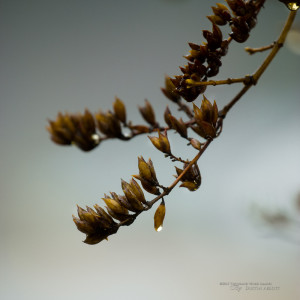
DISCLAIMER: This article and description contains affiliate links, which means that if you click on one of the product links, I’ll receive a small commission. As an Amazon Associate I earn from qualifying purchases.









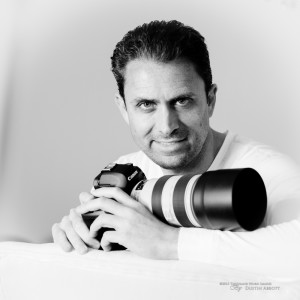


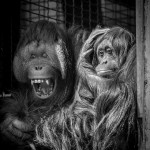
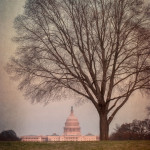
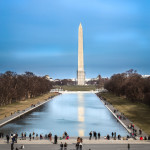
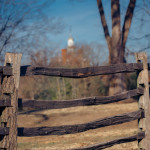
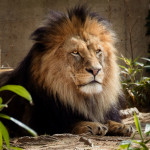
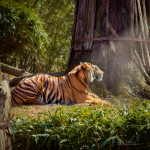

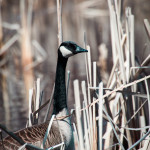
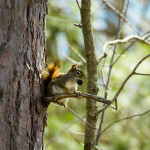
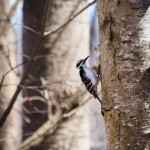
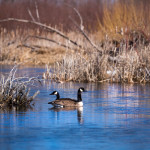
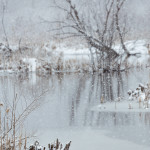
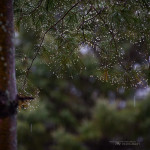
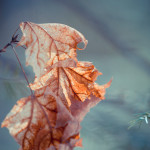
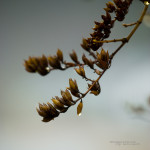

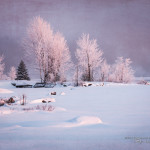


 Nikkor Z 35mm F1.2 S Review
Nikkor Z 35mm F1.2 S Review  Kase AF 85mm F1.4 Review
Kase AF 85mm F1.4 Review  Fujifilm X-Half Review
Fujifilm X-Half Review  Nikkor Z 35mm F1.8 S Gallery
Nikkor Z 35mm F1.8 S Gallery 


